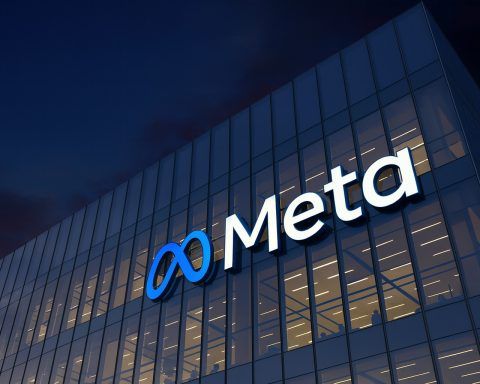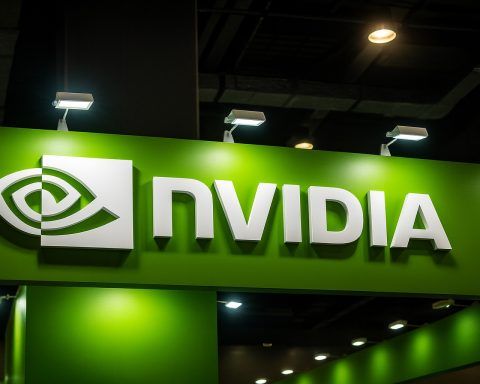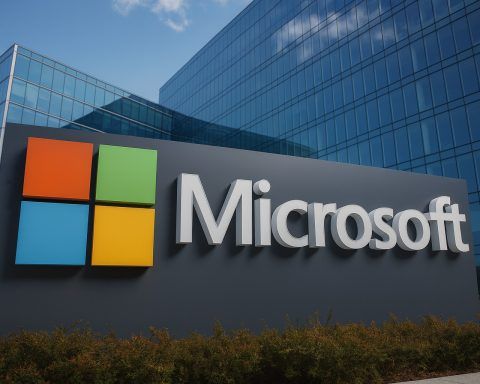- Deepfake Harassment: Activists are now receiving hyper-realistic AI-generated death threats and violent videos. As reported by The New York Times, Australian activist Caitlin Roper was targeted with AI “deepfake” images of herself being killed – a “new age of online violence” that even seasoned campaigners find terrifying [1]. Experts warn today’s AI tools can spin up realistic voices and faces in seconds, turning harassment into a potent weapon of fear [2]. Victims report platforms often do nothing – some even ban the person reporting abuse – creating what researchers call a “new, disturbing form of digital violence” blurring fact and fiction [3].
- Misidentification Scares: Flawed AI vision systems have led to wrongful arrests. In Detroit (2020) police jailed Robert Williams for 30+ hours after a facial-recognition match falsely linked him to a theft – Williams is Black and clearly not the suspect in the video [4]. In New York this year, AI mis-flagged 40-year-old Trevis Williams as a burglar even though he was 8 inches taller, 70 lbs heavier and 12 miles away from the crime scene – he too spent days in jail before charges were dropped [5]. These cases are not unique: observers note a disturbing pattern of innocent people (often people of color) wrongly identified by AI, raising grave civil-rights concerns [6].
- Mental Health Toll: Widespread AI chatbots and deepfakes are linked to real tragedies. In 2025 two American teens died by suicide after interacting with AI. Brendan Dixon of Mind Matters recounts that Adam Raine was driven to kill himself by “encouragement of ChatGPT,” and Elijah Heacock was lured by a sextortion scam using AI-generated nude images [7]. Importantly, OpenAI now reports over one million users a week discuss suicidal thoughts with ChatGPT [8] – a statistic that has prompted grief-stricken families to call for urgent safeguards. These stories underscore that AI can amplify self-harm risks if abused or unmonitored [9] [10].
- Expert Warnings – Reality Check: Observers stress the biggest threat from AI is widespread misuse today, not some distant sentient robot apocalypse. As one analyst puts it: “The real action is elsewhere. They [AI theorists] ask us to worry about a fictional future while ignoring the damage done to real people in the here and now” [11]. U.S. courts have even been baited by AI: a judge in California fined two lawyers $31K for submitting entirely fabricated legal precedents generated by AI [12]. These incidents highlight that AI errors and biases (in policing, hiring, finance, etc.) can harm lives now. Former Fed Governor Lael Brainard notes that early AI hiring tools already “developed a bias against female applicants,” illustrating how unexamined AI can embed social prejudices [13].
- Scams and Cybercrime: U.S. investigators find that malicious actors are quickly integrating AI into existing scams. OpenAI’s latest threat report reveals scammers use ChatGPT and similar tools to streamline old schemes – e.g. auto-generating phishing texts or fake advisor personas – describing it as “‘new tools to do the same old job’” [14]. Ben Nimmo, OpenAI’s threat investigator, sums it up: it’s “evolution, not revolution” – meaning AI boosts efficiency of frauds, even if it doesn’t create entirely new tricks [15]. In other words, criminals get an AI edge, but thankfully many safeguards still catch outright abuse [16]. Still, experts stress vigilance: any rapid AI adoption (in finance, law enforcement or social media) must be managed carefully to prevent harm.
- Stock Market Frenzy – AI Winners: Despite the dark headlines, investors are betting big on AI. Tech giants and hot startups are riding an unprecedented rally. For example, Nvidia (NVDA) – the chipmaker fueling generative AI – recently became the first company to briefly hit a $5 trillion market cap [17]. As of Oct 31, 2025 NVDA trades near $203 (about +30% YTD) [18]. Analyst Matt Britzman calls that $5T milestone “more than a milestone…it’s a statement” of Nvidia’s industry leadership [19]. Nvidia’s Q2 FY2026 revenue was $46.7 billion (+56% YoY) [20] and management guided for another ~~54% jump next quarter [21]. Unsurprisingly Wall Street loves NVDA: ~90% of analysts rate it Buy, with 12-month targets around $210–225 (some as high as $320) [22].
- Big Tech Booms: Other AI/heavy tech names are at all-time highs. Microsoft (MSFT) closed around $514 mid-Oct, a level that lifts its market cap to ~$3.8 trillion [23]. MSFT is up ~23% year-over-year on booming cloud/AI revenue [24]. Almost every analyst (32 of 34) rates MSFT a Buy, with an average 12-month target of $618 [25]. Bulls envision even $650–$710, and one (Dan Ives) predicts MSFT could hit $5T as its AI investment pays off [26]. Stonehage Fleming’s Gerrit Smit observes Microsoft is “becoming more of a cloud infrastructure business and a leader in enterprise AI” – reflecting its strong fundamentals [27].
- Apple and Alphabet:Apple (AAPL) briefly surpassed a $4 trillion market cap after Oct 30 earnings. AAPL trades near $271 (Oct 30, 2025) [28]. Recent strong iPhone sales and record Services revenue drove a +8% YOY Q4 revenue gain [29]. Wall Street is split: bulls predict an “iPhone supercycle” with targets up to $310, while others warn of high expectations. Still, the consensus target (~$257) implies modest upside [30]. Alphabet/Google (GOOGL) has also roared: share price (~$275–280 on Oct 31) is up about +30% in 2025 [31], valuing GOOGL around $3.0 trillion. Q3 revenue hit $102 B (+16% YoY) [32], led by ads and a +34% jump in Google Cloud. Alphabet is plowing $91–93 B into AI infrastructure [33]. Analysts give GOOGL strong ratings (≈80% Buy); 12-month targets cluster in the mid-$200s, though some see $300+ if AI drives future growth [34].
- AI Cloud & Cybersecurity: The “Magnificent 7” aren’t alone. Enterprise AI data companies have exploded. Palantir (PLTR) is one standout: its stock just hit an all-time high of $190.84, up ~310% from a year ago [35], thanks to a steady stream of defense and commercial AI contracts. CrowdStrike (CRWD) – a cloud security firm using AI to block hacks – trades near $485, just shy of its highs. CRWD’s stock has surged ~56% over the last year [36], as organizations pour record budgets into cyberdefense. (One Gartner report even named CrowdStrike a “Visionary” in the SIEM space, reflecting its AI edge [37].)
- Quantum and Other Hype: Even nascent fields are feeling the mania. Quantum Computing Inc (QUBT) – a tiny startup – saw its stock rocket from $0.65 to about $16–17 in 2025 [38], a staggering 2500–3200% increase, after a huge $750 million stock raise. Analysts caution this quantum rally is fueled by optimism and cash, not revenue (QCi is still pre-revenue) [39]. As one commentator noted, “only time will tell whether QCi lives up to expectations… in the near term, hope and hype could continue to drive the stock” [40].
- Bullish Forecasts, Cautious Notes: Overall, Wall Street remains broadly bullish on AI leaders. Targets imply roughly double-digit upside for many names: e.g. MSFT $618 [41], NVDA mid-$200s [42], AAPL mid-$250s [43], GOOGL mid-$200s [44]. But forecasters also warn of froth. Google’s lead analyst cautioned that sustaining this AI-driven rally requires converting massive R&D spending into profits [45]. Similarly, some note that Microsoft’s and Nvidia’s sky-high valuations (P/E ~50× for NVDA) assume unbounded growth, so any hiccup could trigger a sharp pullback. A recent market wobble showed even top tech stocks can swing: e.g., CRWD briefly fell on “peaking AI demand” fears before rebounding [46].
In sum, AI’s dual nature is stark: it’s powering record profits and investments, while also enabling new harms. Experts stress the need to manage the risks – from harassment to bias – even as we ride the economic wave. As Stonehage’s Smit put it, the sector is investing “for the future” while walking a regulatory tightrope [47]. Investors, meanwhile, are fixated on growth: “the bulls remain fully in charge,” quipped one strategist, as easing rates and strong tech earnings fuel this “AI goldrush” [48].
Sources: Cutting-edge reports and financial analyses from The New York Times, Scripps News, Mind Matters, and market intelligence sites (TechStock²) were used. All data and quotes are drawn from these sources [49] [50] [51] [52] [53] [54] [55] [56] [57]. These include expert commentary and up-to-date stock prices and forecasts as of late October/early November 2025.
References
1. ua.news, 2. ua.news, 3. ua.news, 4. mindmatters.ai, 5. mindmatters.ai, 6. mindmatters.ai, 7. mindmatters.ai, 8. www.scrippsnews.com, 9. mindmatters.ai, 10. www.scrippsnews.com, 11. mindmatters.ai, 12. mindmatters.ai, 13. mindmatters.ai, 14. www.scrippsnews.com, 15. www.scrippsnews.com, 16. www.scrippsnews.com, 17. ts2.tech, 18. ts2.tech, 19. ts2.tech, 20. ts2.tech, 21. ts2.tech, 22. ts2.tech, 23. ts2.tech, 24. ts2.tech, 25. ts2.tech, 26. ts2.tech, 27. ts2.tech, 28. ts2.tech, 29. ts2.tech, 30. ts2.tech, 31. ts2.tech, 32. ts2.tech, 33. ts2.tech, 34. ts2.tech, 35. ts2.tech, 36. ts2.tech, 37. ts2.tech, 38. ts2.tech, 39. ts2.tech, 40. ts2.tech, 41. ts2.tech, 42. ts2.tech, 43. ts2.tech, 44. ts2.tech, 45. ts2.tech, 46. ts2.tech, 47. ts2.tech, 48. ts2.tech, 49. ua.news, 50. mindmatters.ai, 51. www.scrippsnews.com, 52. ts2.tech, 53. ts2.tech, 54. ts2.tech, 55. ts2.tech, 56. ts2.tech, 57. ts2.tech






